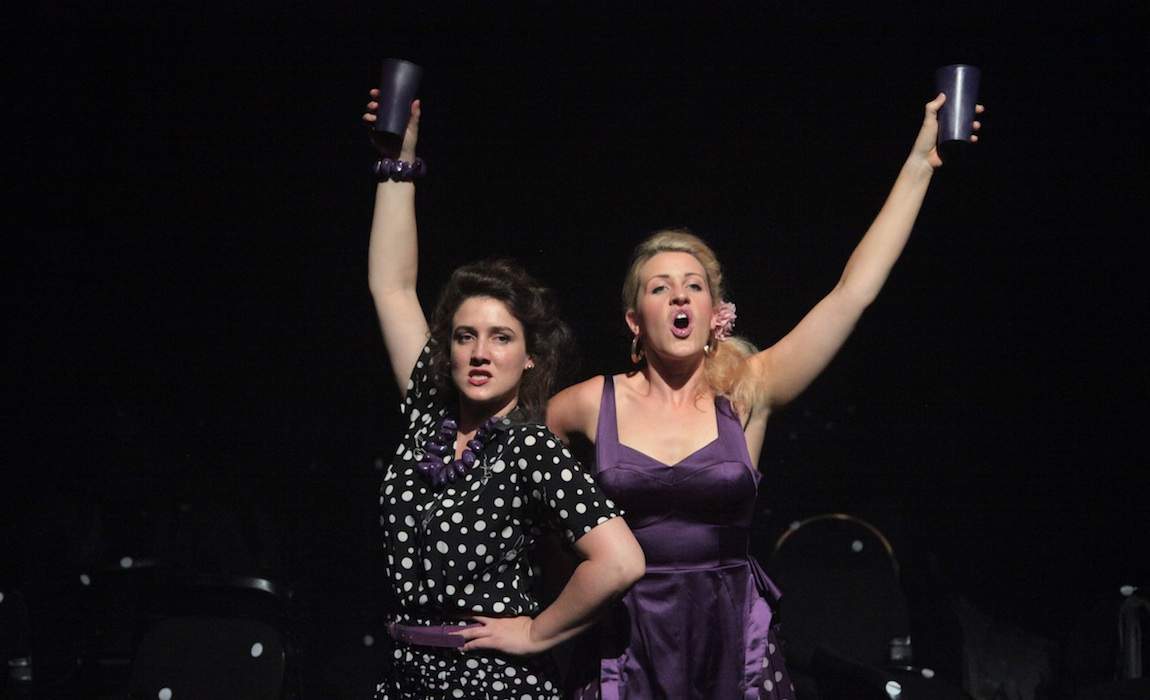I Know There’s a Lot of Noise Outside but You Have to Close Your Eyes
I'm Trying to Kiss You productions deconstruct the idea of 'women on stage' on stage.
Overview
I Know There's a Lot of Noise Outside but You Have to Close Your Eyes is a provocative nugget of a show compact, elusive and funny. Performers Zoey Dawson and Anna McCarthy devised the piece in collaboration with writer and director Allison Wiltshire, and NIDA Independent has joined Melbourne performance collective I'm Trying to Kiss You to bring the piece to Sydney following its premier at the Melbourne Fringe in 2011. The piece is a deconstruction of standard theatre and the formulaic representations of women. Its abandon is refreshing, but the chaos, however organised, is perplexing.
Two childhood friends are meeting each other for a girls' night out after a long time apart to compare their respective success in life. Like a 10-year school reunion, it's a cloak-and-dagger battle of egos presented as cattiness with a smile. McCarthy compliments her friend with a side insult, "I love your dress, it’s hilarious", whilst Dawson patronises, "You're still single? That's OK." This premise, which could easily follow the narrative of drunken admissions of childhood resentments followed by a sentimental reconciliation, unravels instead into a beat poetry dream sequence revealing their inner rage, desire and boredom.
The show targets the ideal of women as having to simultaneously beautiful, polished and smart, and to this end Dawson's parody of Cate Blanchett's Oscar acceptance speech for The Aviator is hilarious and accurate. Standing in the spotlight atop a messy pile of chairs, draped in some old netting, she finishes the acceptance speech with, “Sorry, what was I saying?” This empty sentence becomes a repeated motif throughout the show, as the pair drift in and out of comprehensible thought and mindless chatter.
The noise they create with their babble does make you want to close your eyes (and ears), as the show's title recommends, but the irritation is an effective way of exposing the banality of everyday conversation. The accuracy of their middle class, twenty-something, Australian vernacular is excruciatingly good. Their dialogue shatters into mechanical units of speech and each performer flies off on tangential monologues. We quickly farewell any notion of narrative continuity and try our best to follow their thoughts. At times we're on board, at others we're squinting at the dimly lit edge of some woman's reality.
The intangible nature of the show is a challenge to the audience to make head or tail of the two women's identities and motives. It's radically non-dramatic and radically non-didactic. This elusiveness means that the creative team can be equally commended for their innovation and criticised for their lack of clarity. But this isn't entertainment; it's an upright middle finger to conventional theatre and its representation of women. The show is as interesting as it is frustrating.





